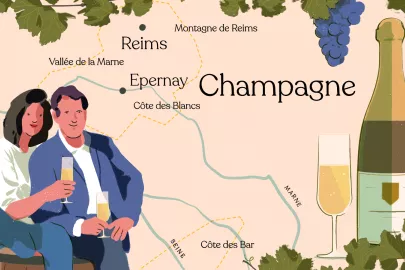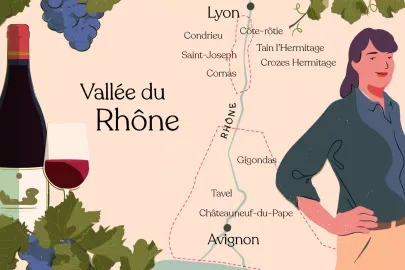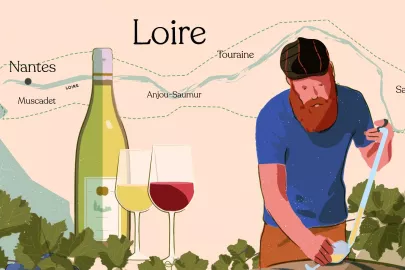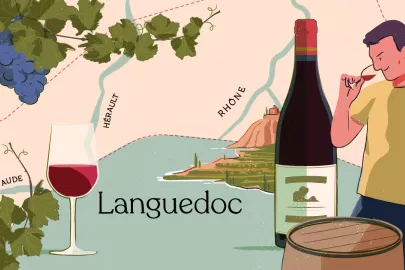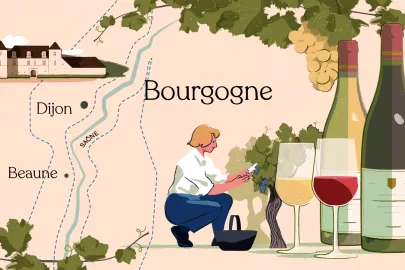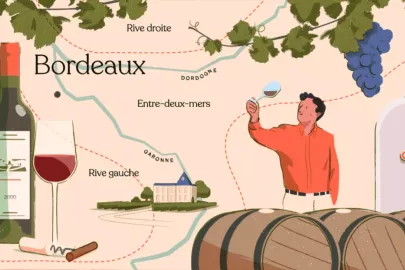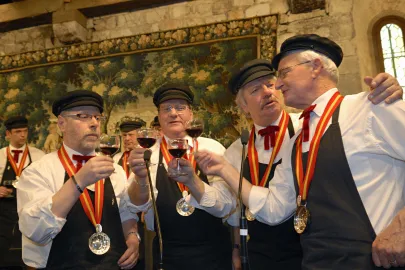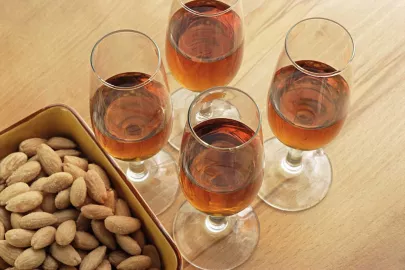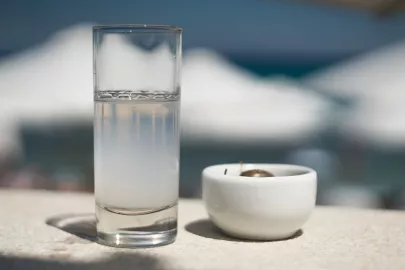Champagne! This magic word is synonymous with celebration and luxury the world over. It is a wine that encompasses French savoir-faire, tradition and art de vivre. But what of the terroir behind these prestigious white or rosé bubbles? Time to shine a light on the Champagne hillsides, houses and cellars inscribed to the UNESCO World Heritage List since 2015.
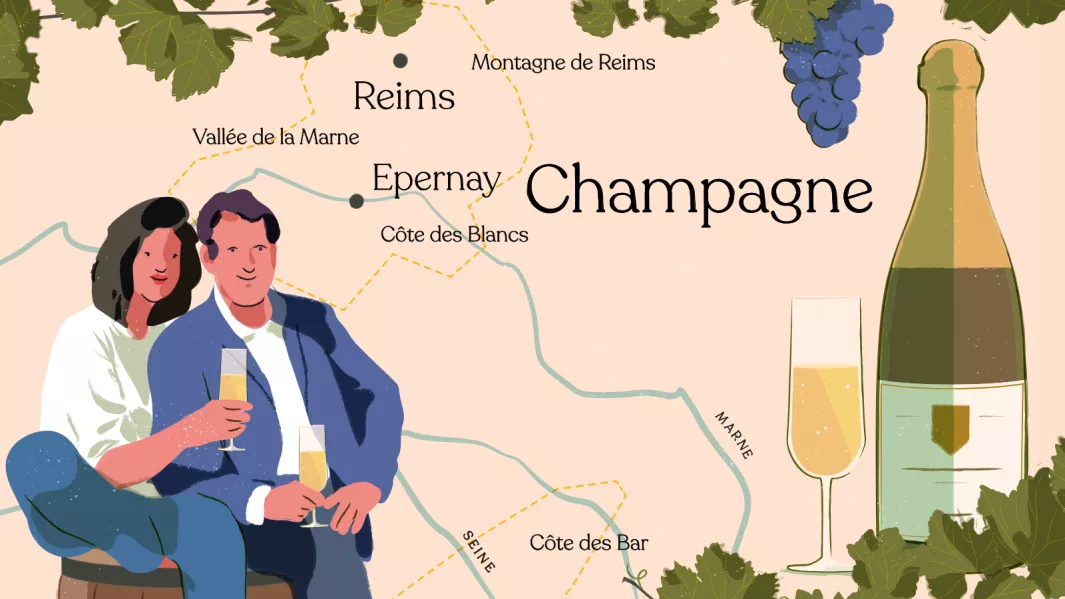
Champagne is exclusively French
As declared by its natives, “champagne is 100% French.” Indeed, only wines produced in the Champagne region some 90 miles to the east of Paris are allowed to bear its name. Here, 34,300 hectares of vines extend over 280,000 parcels, most of which are the size of tennis courts. Each year, 16,000 champagne winegrowers sell 300 million bottles, all with the Champagne appellation.
The four main subregions of Champagne
This atypical winegrowing region encompasses four main subregions, starting from north to south with Montagne de Reims and followed by Vallée de la Marne, the historic centre of winemaking in the Champagne region. Next is the aptly named Côte des Blancs, which owes its name to chardonnay as the predominant white grape variety planted there. This subregion is also where the iconic champagne maison Pol Roger is based. Last but not least is Côte des Bar, the most southerly Champagne appellation, with vines here planted on sloping hillsides.
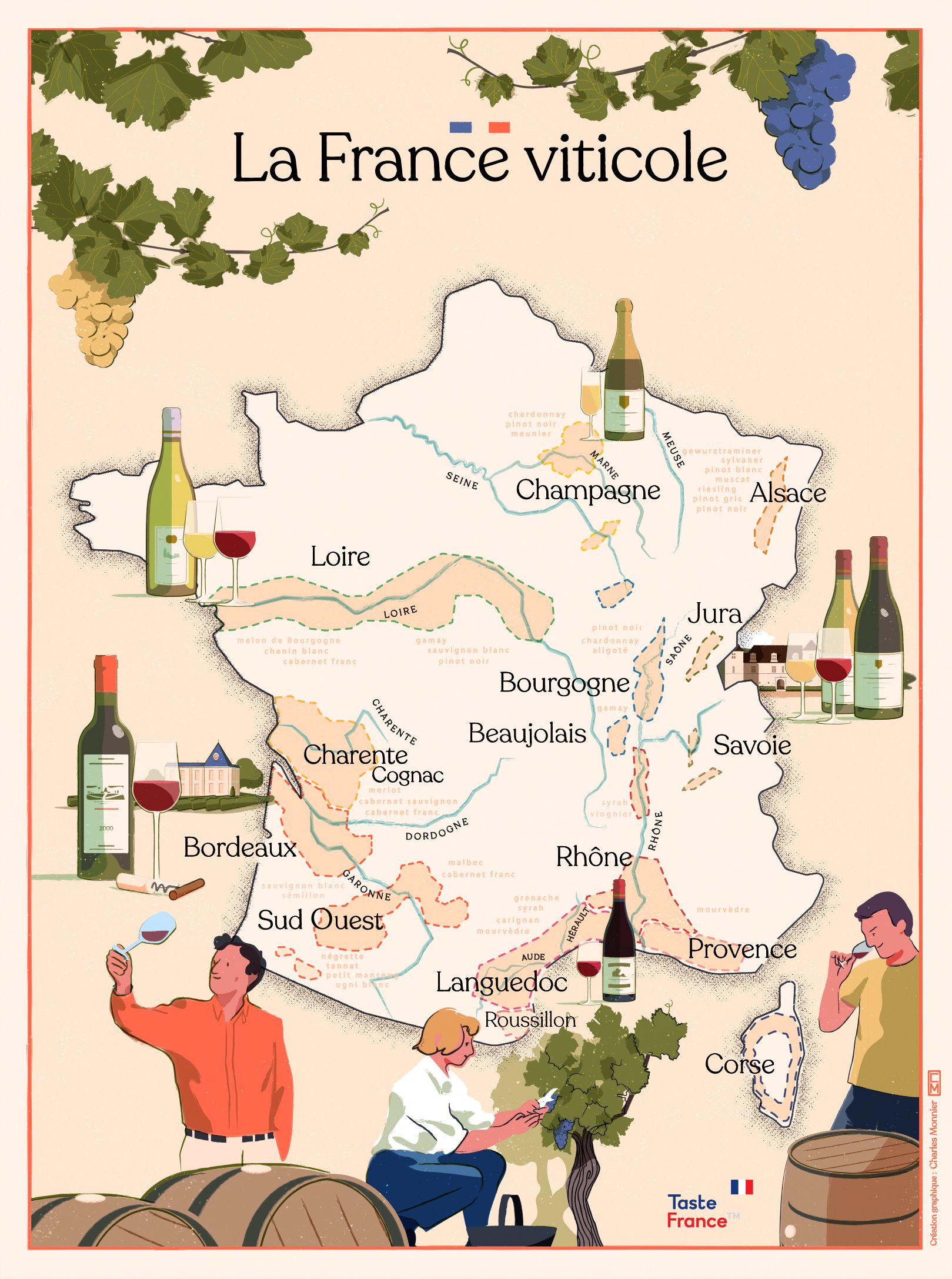
© Charles Monnier
An ideal environment
These terroirs are unique and each one has its own set of characteristics. The climate, soil, environment and vineyard all directly impact the wine. As people from Champagne say, “Try two Chardonnays from two separate regions and you’ll taste the difference!”
The climate has a twofold influence on the vines, simultaneously continental and oceanic. It is neither too cold in winter, nor too hot in summer, with the average annual temperature reaching 11°C. The topography is relatively steep and undulating. The soil is predominantly limestone and also contains marl, hard limestone, sand, heavy clay and chalk, with the latter playing a particularly crucial role as it regulates the temperature and promotes drainage. By drawing their deep roots into this unique soil, the vines absorb the minerals to give champagne its distinctive minerality.
Pinot noir, chardonnay and meunier: the kings of Champagne country
The very composition of these soils has led to the selection of three grape varieties best suited to the Champagne terroir: pinot noir, chardonnay and meunier. Each one achieves the perfect balance between sweetness and acidity, essential for effervescence and the optimum prise de mousse.
Pinot noir is the most widely planted grape variety in the Champagne region (38%). It is also the dominant grape in the Montagne de Reims and Côte des Bar. It lends the wine its strength and structure, as well as its red berry and floral aromas.
Chardonnay is the leading varietal in the Côte des Blancs. It adds a signature freshness to wines, with aromas that dance around floral and citrus fruit notes. It is ideal for producing wines that are built to age.
Meunier is characterised by the body and richness that it contributes to champagne. It produces supple and fruity wines with yellow fruit aromas.
If you encounter champagnes with arbane, petit meslier, pinot blanc or pinot gris in their blends, don’t be surprised. These four ancient grape varieties do fall under the appellation. While they only account for 0.3% of the vines planted in the region, they have recently undergone a resurgence.
Blending, an art form in Champagne
As is the case in other French winegrowing regions such as Bordeaux or Languedoc, wine in Champagne is blended from multiple grape varieties. But there is an extra layer of complexity. Here, the blending process is particularly unique and complicated because it involves not only a range of grape varieties (pinot noir, pinot meunier and chardonnay), but also of vineyards (with different terroirs) and vintages. Each year, winegrowers aim to produce a champagne of similar quality to the previous cuvee. This is why the vast majority of cuvees are labelled “non-vintage”.
The Champagne region has long advocated environmentally friendly viticulture in order to preserve the quality of its terroirs. While organic wines are by no means commonplace here, the numbers are steadily rising. Whether white or rose, brut, demi-sec, extra-brut or natural, winegrowers orchestrate the dance between the bubbles of this unique terroir, vintage after vintage. This magic can be tasted in the 11 million bubbles contained within a single glass of champagne.
Anne Schoendoerffer's selection
This exceptional cuvee is a blend of equal parts chardonnay, pinot noir and pinot meunier. Immersed in the ocean’s waves for a whole year, it delivers delicious iodine notes from the nose to the finish. The palate opens with aromatic citrus notes boasting delectable hints of lemon. Everything about this is refined.
Domaine Pascal Doquet - Champagne appellation - Cuvée Arpège Premier Cru Blanc de Blancs
A blanc de blanc made from 100% chardonnay grapes and blended with different vintages, this is a brut nature. Its floral and citrus fruit notes combine for a wine imbued with freshness and minerality. Its creamy bubbles are just mesmerising.
> Interested to learn more about the secrets French wines? Check out our Beginner's Guide To French Wine!
Contributor

Wine journalist


